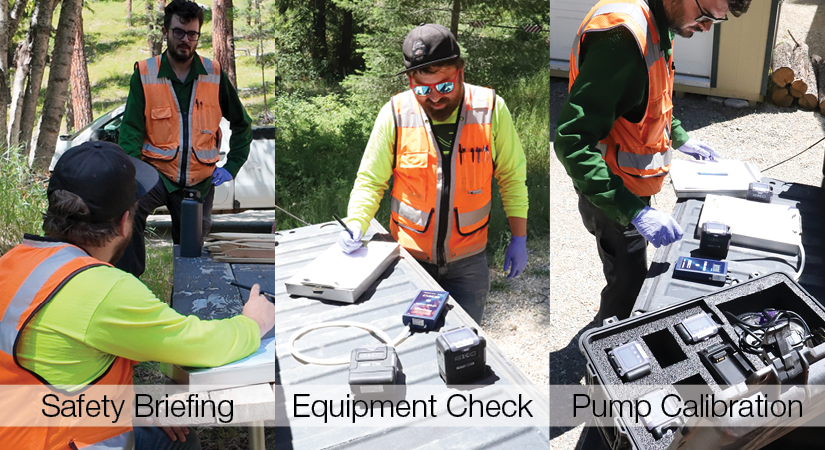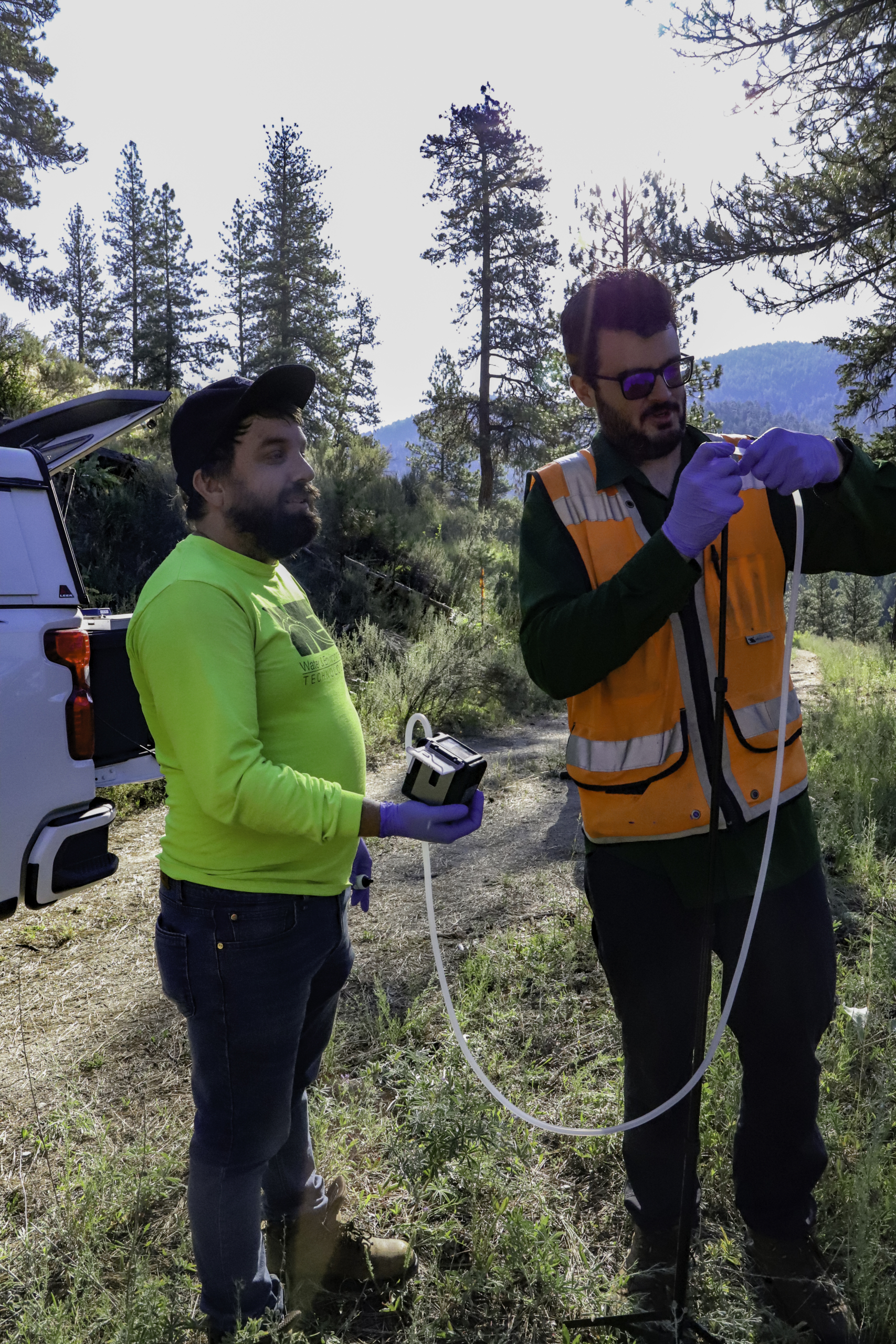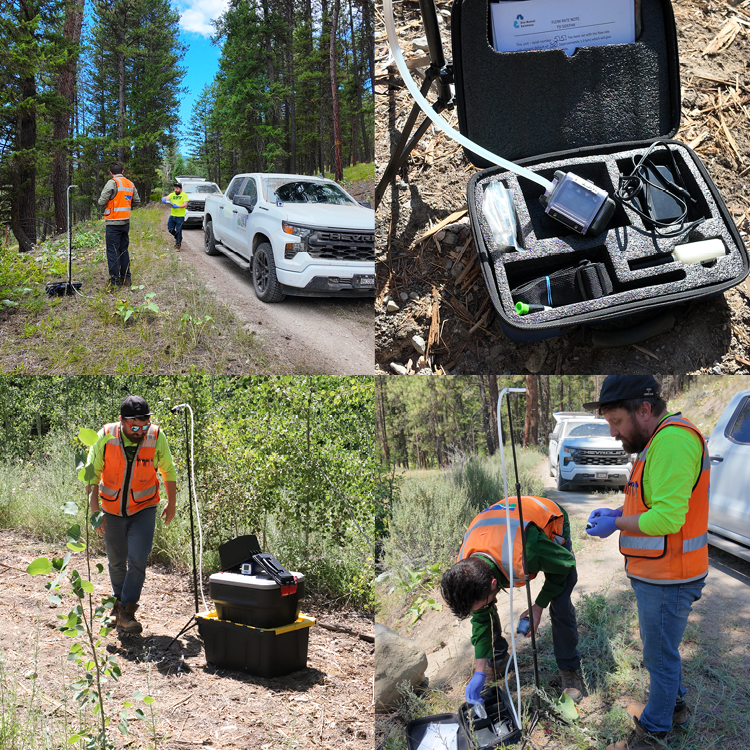BLUE RIVERS, HIDDEN HAZARDS: AIR SAMPLING FOR ASBESTOS IN THE LIBBY WILDLANDS
Libby, Montana
On a hot, humid morning in Libby, Montana, Water & Environmental Technologies (WET) geoscientists Deven Vignali and Marcus Holland met at the US Forest Service ranger station perched above the beautiful blue Kootenai River. The sun had risen, casting golden rays across the treetops and surrounding landscape. This was the starting point for a three-day operation in the rugged, scenic terrain of the Kootenai Forest. With coffee in hand and field gear loaded in the trucks, our team gathered with two Forest Service Rangers to launch a critical air monitoring project aimed at evaluating airborne asbestos fibers in on and around these forest service roads—a mission blending science, logistics, and adventure.
The goal? To assess the levels of asbestos that might be hiding in the dust clouds stirred up by driving down forest roads near the Superfund site shadowing Libby, Montana.
Most people associate asbestos with old insulation or ceiling tiles—not dusty mountain roads. But Libby’s history is different. Throughout most of the 20th century, this community was home to a vermiculite mine that supplied up to 80 percent of the world’s vermiculite, which was used in a wide range of applications, including insulation and potting soil. Unknown to the world for decades, the vermiculite was contaminated with a highly toxic form of asbestos—super fine, needle-like fibers that embed deep in the lungs and stay for life. The result was devastating. Over 2,400 people in Lincoln County have been diagnosed with asbestos-related illnesses, and hundreds have died. To this day, Libby remains a designated Superfund site, and asbestos contamination still poses health risks—especially when disturbed.
That’s what brought WET into the field—the dust!
Each day of the project began with a safety briefing, equipment check, and pump calibration at the ranger station. The instruments included personal sampling pumps worn by the rangers and stationary air monitors placed along remote forest roads. The personal pumps mimic human breathing, drawing air at a steady flow rate through a filter cassette mounted near the breathing zone—just below the chin on the shoulder or chest. These filters capture airborne particles, including asbestos fibers, for later microscopic analysis at an accredited lab. The results will demonstrate that if the filter captures asbestos during a routine drive, then the lungs of the driver could be exposed as well.
Along with the wearable monitors, the WET team installed larger, fixed pumps at key roadside locations. These provided a broader view of airborne dust levels outside the vehicles—crucial for understanding how much dust workers might face when stopped or working outside their trucks. Inside the trucks, we mounted additional pumps to monitor potential asbestos levels inside the enclosed cabs. To maintain consistency and improve the reliability of our results, the two Forest Service rangers stayed in the same vehicle order throughout the study—one always leading, the other always following—allowing us to compare exposure levels between the lead truck, which stirred up the dust, and the second vehicle, which traveled through the suspended particles.
Once all the equipment was set up and working, the fun started. The team drove designated sections of US Forest Service roads, intentionally disturbing the soil to mimic a typical day in the field—just like fire crews, wildlife technicians, or timber scouts might do on patrol. The roads were dry and covered in a fine layer of dirt that lifted and swirled amongst the tires and beyond. For four hours each day, trucks followed the same routes, kicking up dust, recording GPS locations, and keeping consistent driving patterns for reliable sampling.
The work was technical, sometimes repetitive, often dusty, but always vital.
Asbestos shows no signs, but once inhaled, microscopic fibers can lodge deep in the lungs, causing scarring, genetic mutations, and inflammation, which can quietly develop into deadly diseases like mesothelioma or asbestosis—sometimes decades after exposure. And since the body cannot break down asbestos, a single exposure can cause lifelong damage. That’s why field studies and risk assessments like this are so crucial. Estimating risk from historical data is one thing, but measuring what’s actually in the air where people work and breathe is crucial for developing industrial hygiene and safety plans. It’s an essential assessment, not just paper compliance.
It’s an essential assessment, not just paper compliance.
By the end of the third day, dozens of air samples had been logged and packed. The same roads were driven, the same dust stirred. Trucks were wiped down, filters replaced, and the air—once heavy with dust—settled into stillness again. Libby stuns with its rugged beauty, soaring peaks, winding rivers, and vast wilderness. But beneath that splendor, the danger here can’t be seen—it lingers in the soil, waiting to rise with the dust. That’s why we were here—not to chase trouble, but to uncover the truth hidden in the haze. Because even in the most breathtaking places, what’s invisible can still pose a risk. WET is proud to have partnered once again with the US Forest Service on this vital air monitoring effort—working together to protect the people who protect our public lands.







